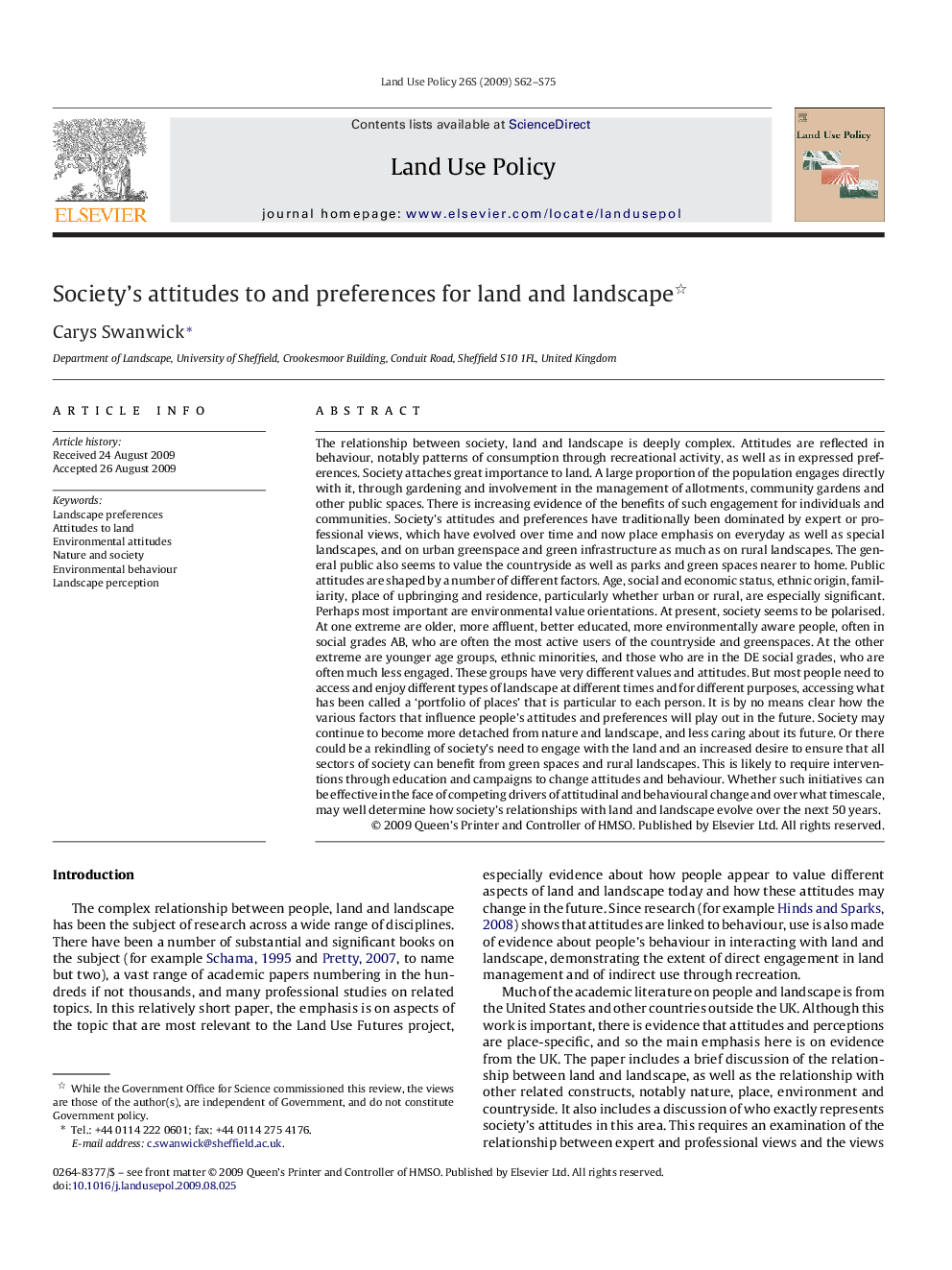| Article ID | Journal | Published Year | Pages | File Type |
|---|---|---|---|---|
| 93762 | Land Use Policy | 2009 | 14 Pages |
The relationship between society, land and landscape is deeply complex. Attitudes are reflected in behaviour, notably patterns of consumption through recreational activity, as well as in expressed preferences. Society attaches great importance to land. A large proportion of the population engages directly with it, through gardening and involvement in the management of allotments, community gardens and other public spaces. There is increasing evidence of the benefits of such engagement for individuals and communities. Society's attitudes and preferences have traditionally been dominated by expert or professional views, which have evolved over time and now place emphasis on everyday as well as special landscapes, and on urban greenspace and green infrastructure as much as on rural landscapes. The general public also seems to value the countryside as well as parks and green spaces nearer to home. Public attitudes are shaped by a number of different factors. Age, social and economic status, ethnic origin, familiarity, place of upbringing and residence, particularly whether urban or rural, are especially significant. Perhaps most important are environmental value orientations. At present, society seems to be polarised. At one extreme are older, more affluent, better educated, more environmentally aware people, often in social grades AB, who are often the most active users of the countryside and greenspaces. At the other extreme are younger age groups, ethnic minorities, and those who are in the DE social grades, who are often much less engaged. These groups have very different values and attitudes. But most people need to access and enjoy different types of landscape at different times and for different purposes, accessing what has been called a ‘portfolio of places’ that is particular to each person. It is by no means clear how the various factors that influence people's attitudes and preferences will play out in the future. Society may continue to become more detached from nature and landscape, and less caring about its future. Or there could be a rekindling of society's need to engage with the land and an increased desire to ensure that all sectors of society can benefit from green spaces and rural landscapes. This is likely to require interventions through education and campaigns to change attitudes and behaviour. Whether such initiatives can be effective in the face of competing drivers of attitudinal and behavioural change and over what timescale, may well determine how society's relationships with land and landscape evolve over the next 50 years.
